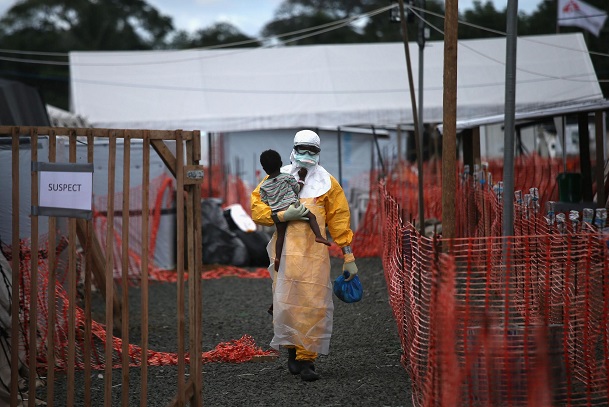 Wash your hands regularly and wear a face mask.
Learn more
Wash your hands regularly and wear a face mask.
Learn more

One suspected case and one probable case have emerged in the city of Oicha in DR Congo’s North Kivu Province, WHO’s emergency response chief; Peter Salama, told reporters on Friday.
While Oicha is not currently under rebel control, Salama said the city is mostly surrounded by territories held by a feared Ugandan insurgent group known as the Allied Democratic Forces (ADF).
“For the first time we have a confirmed case in an area with high insecurity,” Salama said.
“It really was the problem we were anticipating and the problem we were at the same time dreading.”
Countless civilians have been killed by unrest surrounding Oicha. Currently, priests, workers, and government employees are being held hostage there by insurgents, according to Salama.
The outbreak which began on August 1 in the North Kivu Town of Mangina is the 10th to hit DRC since 1976.
The hemorrhage fever has so far killed 63 people--out of the 103 confirmed or probable cases--but Salama warned that health workers were expecting “at least one additional wave of cases.”
The Oicha cases have now made containing the virus a very difficult task.
“We are going to have to operate in some very complex environments,” Salama said.
UN teams can only venture into Oicha with armed escorts.
If the number of patients or contacts of patients in the city increases, the logistical challenges and costs will also mount.
After it widely criticized the handling of the 2013-2016 West Africa Ebola Epidemic that killed 11,300 people, WHO has pledged to revamp its response systems.
The UN agency was widely praised for quickly containing an earlier outbreak in DR Congo’s northern Equateur province, but said from then on that restive North Kivu in the eastern part of the country posed additional challenges.
“We are quite at a pivotal moment in this outbreak. We are truly at crossroads.”
AFP